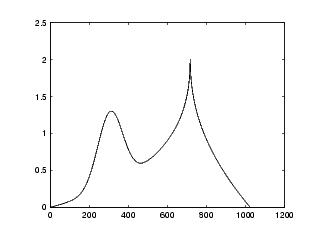

| Wavelet Toolbox |   |
Complex Continuous Analysis Using the Command Line
This example involves a cusp signal.
cwt command. Type
The arguments to cwt specify the signal to be analyzed, the scales of the analysis, and the wavelet to be used. The returned argument c contains the coefficients at various scales. In this case, c is a complex 32-by-1024 matrix, each row of which corresponds to a single scale.
cwt command accepts a fourth argument. This is a flag that, when present, causes cwt to produce four plots related to the complex continuous wavelet transform coefficients:
The cwt command can accept more arguments to define the different characteristics of the produced plots. For more information, see the cwt reference page.
Of course, coefficient plots generated from the command line can be manipulated using ordinary MATLAB graphics commands.
 | One-Dimensional Complex Continuous Wavelet Analysis | Complex Continuous Analysis Using the Graphical Interface |  |